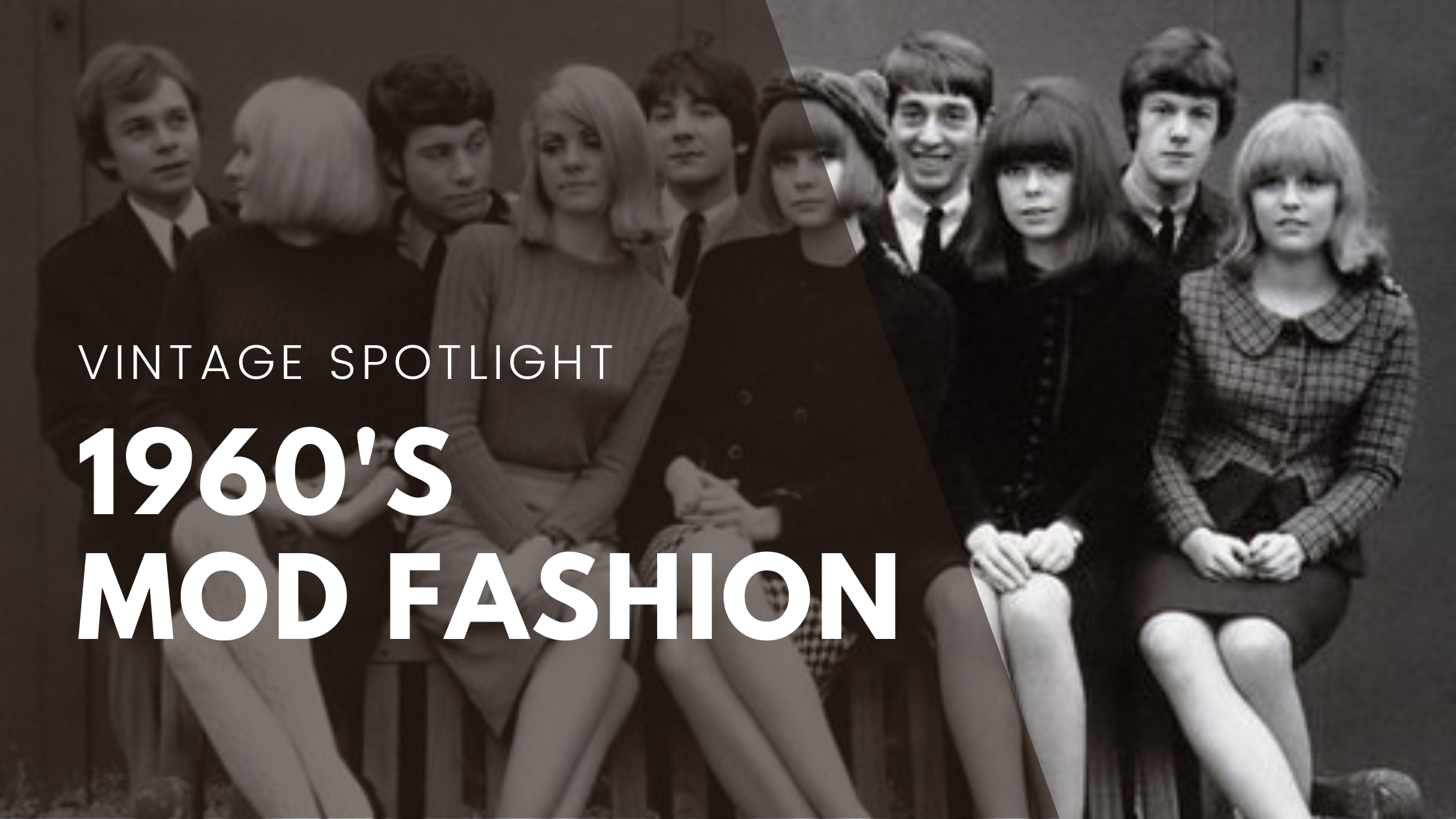Fashion Revolution: The Bold and Innovative Trends of 1960s Mod Style
Join us on a journey that celebrates the audacity and creativity of the Mod fashion movement as we pay homage to the trailblazing individuals who forever changed the course of fashion history. From London's vibrant streets to the far corners of the world, Mod fashion is a testament to the power of youthful rebellion and the enduring impact of fearless self-expression.
Mod fashion encapsulated the spirit of a generation seeking to break free from the shackles of tradition. It was a rebellion against the conservative norms of the past, celebrating the dynamism and energy of youth culture. Mod fashion exploded onto the scene from its inception with its audacious and unconventional designs, vibrant colors, and sleek silhouettes. With their fearless experimentation and avant-garde sensibility, the Brits became the driving force behind this iconic movement.
The 20 years of austerity in Britain following World War II was boldly broken in the mid-1960s ushering in an attitude of “anything goes” as a new generation matured into adults. The “do your own thing” outlook applied to clothes, music, and art. This new fashion revolution was youth-oriented and youth-driven, starting in the streets of London rather than in the old couture houses of Europe. The Baby Boomers were coming of age and making their presence known.
Hallmarks of the Mod style include; miniskirts, bold colors, and graphic prints inspired by art, specifically Pop Art. The heavy influence of the contemporary Pop Art scene infiltrated fashion as works of art were translated from the canvas into the fabric. Style icons like Jean Shrimpton and Twiggy personified the mod look, bringing the fashion trend of Britain worldwide.
The time was right for the Mod style to move beyond the artsy corners of London as the boutique clothing store simultaneously emerged as “the happening” place to shop in the 1960s. Boutiques were not the stuffy, old-fashioned department stores of days gone by, they were fun and hip, and young people felt independent and comfortable shopping there. No shopping district was more famous for swinging boutiques than Carnaby Street and Kings Road in London. But America would not be left out of the trend, opening Paraphernalia on Madison Avenue in New York in 1965, creating an instant smash hit.
MARY QUANT, MOD DESIGNER
One of the primary designers and innovators of the Mod style was Mary Quant, her black daisy logo is often still seen in alternative clothing stores today. Quant became the most successful designer and spokesperson for the Mod style and way of life. From her King’s Road boutique called Bazaar, she helped popularize the mini-skirt, invented hot pants, the Chelsea Girl look, and the skinny rib sweater. One of her most revolutionary fashion innovations was tights for mini-skirts, as stockings and garters would no longer be appropriate. She changed the face of makeup forever by creating waterproof mascara; suddenly, women could cry, swim and run for the bus without messing up their fab makeup.
Regarding the rise in popularity of her designs, Quant describes the Mod movement: “At first, we thought it was just the art student type that wanted to look like us and buy our clothes. But what we didn’t realize at the time and didn’t discover for some time was the fact that we were interpreting the mood of the whole generation, not just smart art students. The whole thing caught on in a much bigger way than we expected. We thought we were just working for people who lived in Chelsea, but the whole thing was actually what people wanted from all over.”
ENAMEL FLOWER BROOCHES
A recurring motif that symbolized the Mod style and transitioned into the flower power era of the late 1960s was the bold, bright, and colorful daisy. This motif found its way into a massive trend of enameled flower brooches. These ubiquitous colorful accents could be worn on dresses, purses, scarves, belts, and hats... they began to pop up everywhere!
Much of the appeal of these bright enamel flower brooches was that they were not “your mother's jewelry.” There was nothing conservative about these accessories; they were cheap, cheerful, and mass-produced. Young women could afford to buy them in bulk, wearing a different one every day of the week. Collectors today love these spirited little pins for the same reasons. They're fun to collect, look great on sweaters, handbags, and dresses, and don't cost an arm and a leg.
When collecting enameled flower pins, the condition is vital. Please look for pins without any chips in the enamel and a secure hook and closure.







